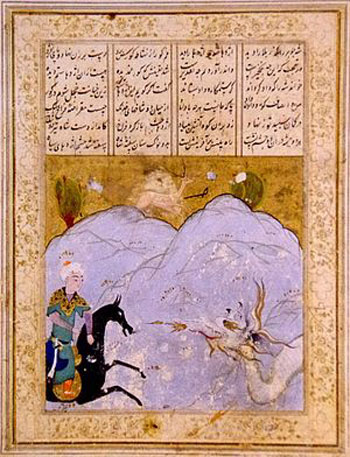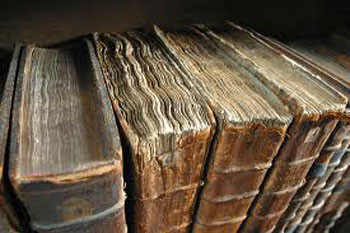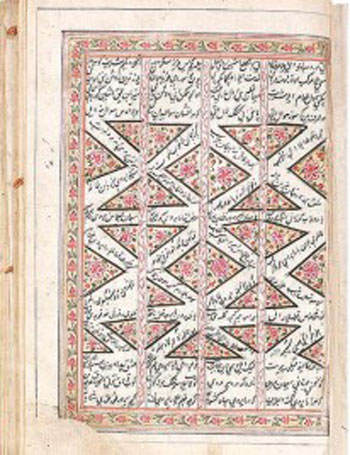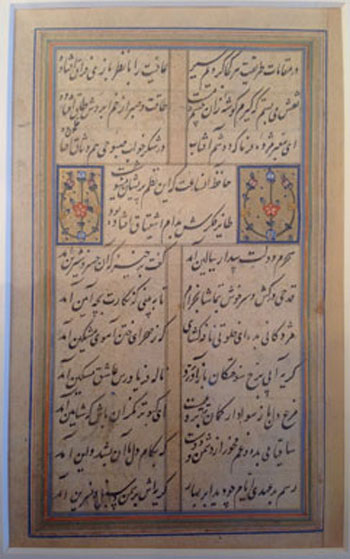Home page
» HISTORY
» The ancient manuscripts in Azerbaijan
The ancient manuscripts in Azerbaijan It is known that the first book in Azerbaijan was written in the XI century. In the Middle Ages with creation of fine handwriting samples in the territory of Azerbaijan in Turkish, Arabic and Persian languages, bringing of the world most popular books in the country had enriched our national book culture. The sources indicate that during this period of over 1 million manuscript books have been collected. Preservation of manuscripts  Today, Institute of Manuscripts named after Mohammad Fuzuli of Azerbaijan National Academy of Sciences is considered to be on of centers where written Eastern monuments of the world were collected and the only national institution with protected Azerbaijani manuscripts functions. At present, the different materials with the total number about 60 are preserved in the collection of the Institute of Manuscripts. Of these, about 12 thousand manuscripts are book (in view of 4-5 works written in each book, its manuscripts of 40 thousand works), and the rest covers the archaeological documents, personal archives of Azerbaijani culture figures of second half of XIX century – first half of XX century (till S.Vurgun), stone engraving and old printed books, old time periodicals, photographs, and copies, microfilms, as well as modern books on various aspects of Azerbaijani studies. Monuments of Azerbaijan and other eastern Muslim countries written in Turkic, Arabic and Persian languages covering a period of thousands of years are protected in treasures of written memorials, which are stored in the institute at the special climatic conditions. Works of the East, almost all the great classics or samples from them are represented in the collection of the Institute. In 50-80-ies of the last century, a number of areas of Azerbaijani handwriting were founded at the Institute of Manuscripts and so the text of Kitabi Dede Korkut, heritage of Khagani Shirvani, Sheikh Mahmoud Shabustari, Syed Imadaddin Nasimi, Kishvari, Shah Ismail Khatai, Fuzuli, Abbasgulu aga Bakikhanov, Khurshudbanu Natavan, Heyran khanum, Fatma khanum Kamine, Lutfeli bey Azer, Mirza Hasan Garabaghi and other classics was studied and their works have been published. Manuscripts samples  3 manuscripts of Institute of Manuscripts with collected different materials of 40 thousand manuscripts have been included in the UNESCO heritage of manuscripts. One of the most valuable art pearls of institute is full manuscript of collection of poems of the XII century poet Nizami Ganjavi Khamsa. The manuscript was copied in 1636 by Mohammed ibn Darvish Muhammad Darakhtiji. This manuscript is single because while Dust Muhammad created his manuscript he purchased the oldest manuscript of «Khamsa which was possible to obtain and copied his manuscript from this work. Text was written in nastaliq calligraphy style being most common in XV century. Title of each poem was decorated with graceful golden ornaments of bright colors. There are miniatures of Isfahan school of miniature. There are many books decorated with miniatures in the Institute of Manuscripts of Sanain The Garden of Truth (written in 1625), Amir Khosrov Dehlavi’s Eight Paradises (1579), Nizami Ganjavi\'s Seven Beauties (1636), Urfin’s Divan (XVII century) and Hafiz Shirazi’s Divan (1584), Maktabi’s Leyli and Majnun (XVII century), Amir Shahin’s Nushafarin and Govhartaj (1829), Divan (1573), Mohammed Fuzuli’s Divan (XVII century).  The other important medical manuscript in the Institute is Shamsaddin ibn Kamaladdin Kashani’s Bodies Souls is (Arvah al-Ajad) work. This medical encyclopaedia published in the XVII century, which marks the highest quality of water transferred to the paper. Kashani in his book of medicine correctly provides description of every disease, from simple to complex. Before writing a book Kashani studied the works of his predecessors, ancient and medieval doctors Hippocrates, Galen, Zakaria Razi Ismail Gurgani (Jurjani), and including veterinary medicine. His encyclopedic work is very unique and rare. Because the information on this work was not reflected in any directory and resources of the Institutes of Manuscripts of the world. The work written by Muhammad bin Abu Bakr al-Shafi in the XV century, Irshadul Muhtaj ile sarhul minhaj refers to the law. In this work, Abu Bakr gives explanation to most common and popular Minhajut-tibin Islamic law (figha). Minhajut-tibin» work was written by a well-known lawyer of the XIII century Muhyaddin Abu Zakariya Yahya ibn Sharaf an Navoi ash- Shafil. Al-Irshad‘s Baku manuscript is of great interest. Thus, it was copied by the author\'s own hand. Another rare work attracted the attention is the XV century Turkish manuscript on astrology Kitabut Tanjim. Its author Azerbaijani scientist named Hoja ibn Adili Ibray provides information on the various constellations, influence of stars and planets on human destiny and how to prepare start destiny and read it.
|
